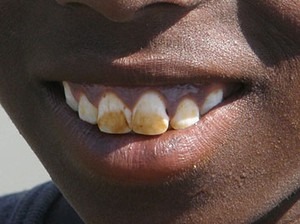Water quality assessment
Many analytical methods are used to test for the presence and concentration of possible contaminants in water. Concentration is the measure of the quantity of a substance dissolved in a known volume of water. For water quality assessment, the units used are usually milligrams per litre, which is written as mg/l, or mg l–1.
Microbiological tests
As you have been reading, there are many different types of pathogenic micro-organisms that may be present in water but it would be very difficult and time-consuming to test for all of them. The source of the pathogens is usually human faeces; therefore, tests have been devised that detect the presence of faecal contamination. If faecal contamination is found, this indicates that pathogenic organisms may be present. The most widely used tests for faecal contamination are for total coliforms, faecal coliforms and Escherichia coli (E. coli). Coliforms are a group of bacteria found in human and animal faeces and also in soil. ‘Total coliforms’ includes all bacteria in this group. The presence of ‘total coliforms’ indicates contamination of some sort but, because of their relatively wide distribution, they cannot be used to confirm if the contamination is from faeces. Faecal coliforms are a sub-set of total coliforms and, as the name suggests, are typically found in faeces. E. coli is a type of faecal coliform bacterium that is commonly found in the faeces of humans and other warm-blooded animals. If E. coli is present in a water sample this indicates faecal pollution and the possible presence of pathogenic organisms; the absence of E. coli from a sample shows that the chances of faecal contamination of the water, and therefore of pathogens being present, are negligible. Thus the presence of E. coli in a water sample provides an important indicator of pollution. An indicator in this context is a biological species that tells us something about the environment.
It is important to realise that E. coli is only an indicator and its absence cannot give complete assurance that the water is safe. Some pathogens – such as Giardia, Entamoeba histolytica and some viruses – can survive in waters long after E. coli has died; therefore, the absence of E. coli will not necessarily mean that water is totally free from other organisms.
Chemical tests
Although the great majority of health-related water quality problems are the result of biological contamination, chemical contamination of water sources can also cause serious health problems.
Fluoride in low concentrations (less than 1.5 mg l–1) in drinking water has beneficial effects on teeth, but exposure to excessive fluoride can give rise to a number of adverse effects (WHO, 2004). Fluorosis (an abnormal condition caused by excessive intake of fluorides) is a common problem in children living in the Rift Valley region of Ethiopia where the level of fluoride, especially in groundwater, can be high. Levels of fluoride above 1.5 mg l–1 can lead to mottling of children’s teeth (the appearance of spots or blotches of different shades of colour – Figure 2.9). Higher levels can lead to severe skeletal fluorosis, where fluoride accumulates in the bones over many years causing stiffness and pain in the joints and bones (WHO, 2004). Consuming water that has levels in excess of 10 mg l–1 leads to crippling skeletal fluorosis where the extremities become weak and moving the joints is difficult. The vertebrae partially fuse together, crippling the patient (WHO, 2004).

Figure 2.9 Fluorosis causes mottling of children’s teeth.
Alternatively, some health effects occur as a result of specific chemical deficiencies in the diet, of which water forms a part. Examples include goitre, caused by iodine deficiency, and dental caries resulting from low fluoride intake.
Physical tests
Turbidity (cloudiness due to a large number of very tiny particles), colour, taste and odour (smell), whether of natural or other origin, affect people’s perceptions of water. As you know water should be free of tastes and odours that would be unpleasant to the majority of people. In extreme cases, people may avoid water that does not look or taste good – even if it is otherwise safe – in favour of more pleasant-looking and tasting water that may actually be contaminated.
Colour in drinking water occurs due to the presence of dissolved organic matter and metals such as iron and manganese. Colour can come from industrial pollution such as from dyes used in textile manufacture. Odour in water is due mainly to the presence of organic substances. Taste is the combined perception of substances detected by the senses of taste and smell. Changes in the normal taste of a piped water supply can be important as they may signal changes in the quality of the raw water source or deficiencies in the treatment process.